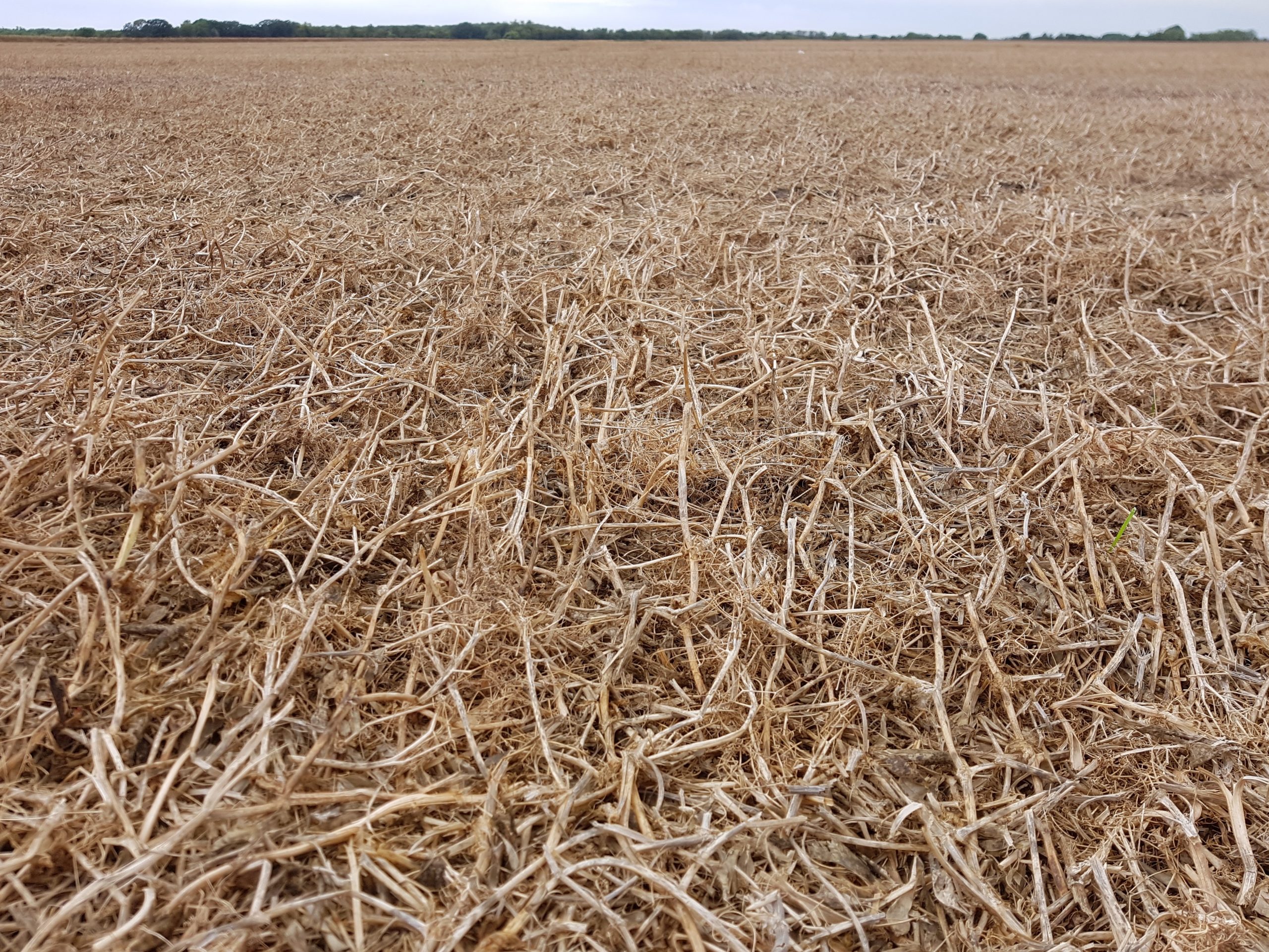When faced with feed shortages, farmers can look to field pea straw as an alternative feed source for cattle. Here are a few things to know about pea straw before feeding:
- Nutrient values of field pea straws are highly variable and a feed analysis is strongly recommended. Rations containing pea straw must also be balanced. Pea straw is useful for beef cow rations where high-quality roughage is not as important as other classes of cattle. When fed with high-quality roughage, grain or a combination of both, pea straw can be a cost-effective ration. Note that cattle must be fed hay rather than straw for at least six weeks prior to calving and throughout the lactation period.
- Pea straws can have significantly higher protein levels compared to cereal straws, but also have higher levels of fibre that may limit digestibility and expected feed intake.
- Diseases affecting peas do not contain toxins or compounds that are considered harmful to cattle. In addition, there is no risk of nitrate accumulation.
- Palatability and intake can be quite variable. It has been reported that cattle either love it or refuse to eat it. Pea straw can be dusty and coarse, which may reduce palatability and intake. Mold will make the straw even less desirable. Processing pea straw by grinding or chopping it with a mix mill or hay buster can improve intake.
- Harvest in a way that leaves the straw as intact as possible. This applies to cereal straws as well. Consider cutting the crop a little higher (e.g., at a 6-inch vs. 3-inch height), so there is some stubble for the straw to lay on for easier pick-up.
- It can be tricky to get pea straw into a bale because plants can be quite brittle and the leaves fall off easily. These bales have been reported to pop apart or explode, so handle carefully.
- Consider planting a cover crop or winter cereal after straw removal for soil cover throughout the fall and winter.
Research Results
In a three-year study examining the nutrient composition of over 450 field pea straw samples in Alberta, researchers found nutritive value to vary considerably across locations (Olson et al., 2001). Crude protein of field pea straw was 7.5%, on average, ranging from 4.7% to 12.5% overall. It also contained 0.0087% P, 1.38% K, 0.133% S, 1.68% Ca, 50% acid detergent fibre (ADF) and 63% neutral detergent fibre (NDF), on average.
References
Olson, M.A., R.-C. Yang and S.F. Blade. 2001. Nutrient concentrations and nutritive value of field pea (Pisum sativum L.) straw in south central Alberta. Canadian Journal of Plant Science Short Communication.
Heyden, J. Salvaging pea straw for feed. Saskatchewan Pulse Growers Fact Sheet.

